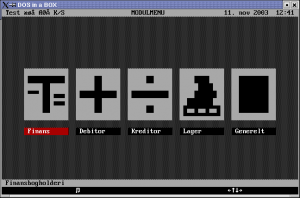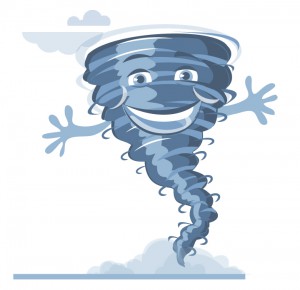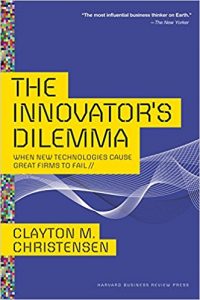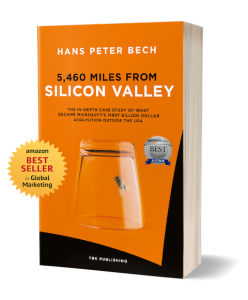When a customer implemented an ERP solution from Navision, only ten per cent went for licenses. Ninety per cent of the value was created by and remained with the dealers.
When Microsoft acquired Navision in 2002, the latter had a turnover of DKK 1.8 billion (USD 360M), employed 1,200 people and showed a profit of 22% of revenue.
A healthy business you could say.
But Microsoft also took over Navision’s ecosystem with more than 2,000 business partners serving over 100,000 customers in 30 countries. The Partners developed industry solutions, general modules and customizations, as well as providing for the implementation and training of customers. And they were at the forefront of all marketing and sales activities.

When a customer implemented an ERP solution from Navision, only 10
The total turnover of and around Navision’s products was in the order of DKK 17 billion (USD 3.4B) in 2002 and the entire ecosystem employed over 20,000 people.
When Microsoft paid DKK 11 billion (USD 1.45B) for Navision, a large part of the amount was justified by the ecosystem. If Navision itself were to have built an organization to handle so many customers, they would have had to recruit more than 100 new employees every single month in their 18 years of service. They might have been able to do that, but it was just not a task they wanted to take on, and getting independent dealers to do it instead made the business model much more robust.
It Takes Time to Develop a Reseller Channel
Although both Damgaard Data and Navision Software (the two companies merged in 2000 and became Navision) from the start in 1984 based their business models on resellers, it took several tours around the drawing board before they found the value-added scaling muscle that the partner channel in 2002 constituted.

The first products, Danmax and PCPLUS were fairly simple and did not give dealers any opportunities for making extensions. But it was also not so important in the 1980s, where the retail discount on a single user solution (hardware and software) easily reached DKK 20,000 (USD 4,000). There was good money to make even with simple resale.
It changed with Concorde Economy and
Disruption from the Bottom
Damgaard Data and Navision Software started at the bottom of the market and worked upwards. In the beginning, it was quite easy to become a dealer, but over time the learning curve became steeper and culminated with Damgaard Data’s Axapta in 1998.

The products benefited from the development of the
Together with Microsoft, Lotus and many others in the PC industry, Damgaard Data and Navision Software helped create one of the biggest bloodbaths*) that the IT industry to date has experienced. In the mid-1980s, suppliers of mainframes and minicomputers dominated the IT industry. Just 10 years later, most of them had closed up shop. They didn’t see what potential PCs tied together in a network offered and had not noticed the forest of small software houses that developed solutions as customers due to price and facilities were quick to adopt.
Damgaard Data and Navision Software did not know that they disrupted the market for ERP solutions, for neither the term “disruption” nor “ERP” was invented at the time. They just did!

Only in 1997 came Clayton M. Christensen’s The Innovator’s Dilemma: When New Technologies Cause Great Firms to Fail, introducing the concept of disruption and explaining how it could take place just under the nose of the big and market-leading companies. It would take a few more years before the content of Clayton Christensen’s book had reached the broad audience and the word disruption was on everybody’s lips. Today, it is virtually used as a synonym for all types of changes, although it was not thought so.
Two Completely Different Models

As you can read in my book 5,460 Miles from Silicon Valley, Damgaard Data and Navision Software seized the task in completely different ways.
Both companies were aware that the recruitment and management of the dealers were called “distribution.” Damgaard Data, therefore, created Damgaard Data Distribution A/S, which took care of the tasks, while Navision Software handed them over first to Sophus Berendsen and later on to IBM Denmark (Damgaard Data Distribution was for a short period of time distributor of PCPLUS!). Only when Navision Software broke with IBM in 1994, did they get directly engaged in the distribution activity. When Damgaard Data was to start internationalization, they laid the distribution in IBM’s hands. It went wrong, and in 1998 they bought out IBM and took on activities themselves.
Both Damgaard Data and Navision Software fully understood the value of an efficient reseller channel and constantly refined the methods for recruiting more and making the existing ones more successful.
These methods can still inspire companies, even today.
*) IBM alone reduced the number of employees by 180,000 from 1985 to 1995, while number 2, Digital Equipment Corporation after massive layoffs, was acquired in 1998 by PC company Compaq. The many hundreds of thousands of employees who lost their jobs by layoffs and company closures usually got new jobs quickly in the expanding part of the IT industry.
